Misc
Horror 101: Gene Mapping the Legacy of Jurassic Park
The first Jurassic Park film culminates with a banner that reads “When Dinosaurs Ruled the Earth” billowing toward the ground before a triumphant Tyrannosaurus rex. There was also a time when one could look back fondly on when dinosaurs ruled the silver screen, with the original trilogy being about the consequences of manipulating dino DNA for our entertainment ending back in 2001. Fourteen years later, however, the franchise that was bioengineered by Steven Spielberg in 1993 from the Michael Crichton novel of the same name had been brought back from extinction with Jurassic World. Cut to February 2025, and the first trailer has released for Gareth Edwards’ Jurassic World: Rebirth, a requel of the reboot trilogy – the 7th in the franchise – and you may be wondering how exactly we went from Sam Neil having a panic attack over a majestic Brachiosaurus to Scarlett Johansson, Mahershala Ali, and Fiyero from Wicked going toe-to-toe with a mutated “Xenorancor rex.”
The deeper you dive, the more convoluted and, as much as I hate to say it, contrived the franchise and its lore become; besides the films, there are comics, video games, TV series, and more to explore. In the essence of simplicity, I’m here to lay out the facts of the film franchise alone. The original is hands-down one of the best films of all time with SFX that holds up to this day, and the rest of the bunch are great summer popcorn fun if you turn off the Letterboxd Snooty Cinephile Filter in your brain. So, in honor of the great Mr. DNA, let’s slice open some prehistoric celluloid and get down to it! founder John Hammond, “You never had control.”

The first Jurassic Park film culminates with a banner that reads “When Dinosaurs Ruled the Earth” billowing toward the ground before a triumphant Tyrannosaurus rex. There was also a time when one could look back fondly on when dinosaurs ruled the silver screen, with the original trilogy being about the consequences of manipulating dino DNA for our entertainment ending back in 2001. Fourteen years later, however, the franchise that was bioengineered by Steven Spielberg in 1993 from the Michael Crichton novel of the same name had been brought back from extinction with Jurassic World. Cut to February 2025, and the first trailer has released for Gareth Edwards’ Jurassic World: Rebirth, a requel of the reboot trilogy – the 7th in the franchise – and you may be wondering how exactly we went from Sam Neil having a panic attack over a majestic Brachiosaurus to Scarlett Johansson, Mahershala Ali, and Fiyero from Wicked going toe-to-toe with a mutated “Xenorancor rex.”
The deeper you dive, the more convoluted and, as much as I hate to say it, contrived the franchise and its lore become; besides the films, there are comics, video games, TV series, and more to explore. In the essence of simplicity, I’m here to lay out the facts of the film franchise alone. The original is hands-down one of the best films of all time with SFX that holds up to this day, and the rest of the bunch are great summer popcorn fun if you turn off the Letterboxd Snooty Cinephile Filter in your brain.
So, in honor of the great Mr. DNA, let’s slice open some prehistoric celluloid and get down to it!
All About the Jurassic Park Franchise
How Exactly Did They Dig Up Those Dinosaurs?
When I attempted to read the novel as a kid, the dense scientific lingo explaining the intricacies of how Jurassic Park got its start proved hard to comprehend, after all – to borrow a quote from the extravagant Russian diva Katya Zamolodchikova: “I don’t know. I’m not a scientist.”
Screenwriter David Koepp and director Spielberg did their damndest to whittle it down into layman’s terms with great success, so here’s the gist of it in easy order:
- Extract dinosaur DNA from the blood of pesky mosquitoes that have been trapped in amber for millions of years.
- Since DNA degrades over time, fill in the gaps with amphibian (in this case, frog) DNA.
- Commit further genetic manipulation by making all of the dinosaurs female and lysine (an essential amino acid) deficient, retaining control over the population through an inability to procreate and a dependence on supplements.
- Use the completed DNA strands to clone dinosaurs in the lab and birth the embryos in artificial eggs.
To have an exciting movie franchise, one or more of these things must go awry, and so they do. Because certain amphibians can change sex due to environmental conditions, Dr. Alan Grant (Sam Neil) discovered that the dinosaurs began to breed in captivity despite their all-female engineering. And that lysine contingency that would cause the dinos to die off if not given specific supplements? Yeah, they ended up getting enough elsewhere in their diets. So, while a power outage due to corporate espionage is what ultimately sets the creatures free in the park, these two critical scientific oversights explain how life finds a way so that the ancient beasts can survive in the wild throughout the franchise. As paleontologist Ellie Sattler (Laura Dern) admonished park founder John Hammond, “You never had control.”

Who Are the Major Players?
Before going any further, it is best to rattle off some names and nouns within the franchise to arrive at our mutated dino freakshow destination as efficiently as possible. And though the films contain a multitude of famous faces and iconic characters ranging from Neil, Dern, and Jeff Goldblum to Chris Pratt, Bryce Dallas Howard, and even Julianne Moore – they are all mainly irrelevant to the gene-splicing drama we’re here to get to the bottom of.
- John Hammond (Richard Attenborough): Scottish venture capitalist with big dreams, Hammond learns the truths of chaos theory the hard way when his early access tour of the world’s first dinosaur theme park turns deadly. He survives the ordeal but later dies of natural causes in 1998.
- Benjamin Lockwood (James Cromwell): Introduced in the 5th film, Fallen Kingdom, we learn that Lockwood was besties with Hammond and a co-founder of their biotech company, InGen, before a falling out over the morals of turning their cloning efforts toward human experimentation.
- InGen (International Genetic Technologies): Responsible for the pair’s dino cloning efforts, InGen ran various facilities on a group of islands sold to the company by the Costa Rican government ominously nicknamed Las Cinco Muertes (The Five Deaths). After the disastrous events of the first film, InGen was later bought by Masrani Corp, which created the fully operational Jurassic World sequel park in 2005.
- BioSyn: InGen’s much more nefarious rival company that seeks to exploit the dinosaur population through military and pharmaceutical means. They are responsible for the theft of embryos in the first film, which leads to the park’s power outage and shutdown, as well as the ecological disaster our heroes must stop in Jurassic World: Dominion.
- Isla Nublar: The main island where the original park and its sequel park, Jurassic World, reside. During the events of Fallen Kingdom, a volcano erupts and destroys the island and its remaining dinosaurs.
- Isla Sorna: Also known as Site B, it is where InGen bred their dinosaurs and serves as the setting for the second and third films. Following those sequels, the dinosaurs were left on the island to roam free.
- Dr. Henry Wu (BD Wong): InGen’s chief geneticist, Wu worked for the company up through the events of Jurassic World before turning to its rival BioSyn. He redeems himself for his questionable work in genetic engineering by helping the protagonists at the end of Dominion.
- Charlotte & Maise Lockwood (Isabella Sermon): Charlotte was Benjamin Lockwood’s daughter and a brilliant scientist who successfully impregnated herself with her clone (yes, it goes there) in an elaborate workaround for her fertility issues. After giving birth to her daughter/clone, Maise, she dies due to a genetic disorder. In classic sci-fi fashion, evildoers at BioSyn seek to study Maise to better understand the cloning process.
- Indominous rex: The franchise’s first monstrous hybrid leads the charge of what’s to come. Created by Dr. Henry Wu under the orders of the Masrani Corp. to serve as a shocking exhibit at Jurassic World, it is a terrifying hybrid of T-rex, Velociraptor, cuttlefish, tree frog, and snake DNA. Larger and more deadly than the T-rex, it has the agility of a raptor and the flexible jaw of a snake, along with the ability to camouflage and regulate its body temperature.
- Indoraptor: Designed by Wu to be a smaller and more efficient version of the Indominous, its primary use is as a terrifying bioweapon for sale on the black market.
Is Bigger Always Better?
After the pretty straightforward events of the original trilogy, Jurassic World resurrected the franchise in 2015 by bringing us into a fully functional luxury dino resort on Isla Nublar. In operation for ten years, Masrani felt the public was becoming jaded by the shock and awe of these ancient reptiles. Rather than becoming complacent, Dr. Henry Wu created the Indominous rex to satiate our ever-over-it appetites — a fatal mistake. Unlike the events of the first film, which saw destruction come at the hands of meddling men, the Indomious breaks free all on its own because it’s just that good. Personnel and park-goers alike are subsequently ripped through like barbeque, including the most violent death the franchise had seen yet, and the dream that began decades ago as a twinkle in John Hammond’s eye was condemned once more. The Indominous also met its end, shuttered between the jaws of the aquatic giant, Mosasaurus.

So Is the Jurassic Park Franchise Scary?
While the sequels have always been fun, sweaty adventures in their own right, that visceral fear that made audiences drip with terror back in 1993 had largely been missing from the franchise. Despite taking plot points straight out of the 5th sequel playbook with human cloning and black market dealings, Jurassic World: Fallen Kingdom miraculously stuck the landing in the horror department. The first half, which finds our heroes Owen Grady (Pratt) and Claire Dearing (Howard) attempting to save as many dinosaurs as possible on Isla Nublar before the volcano destroys them all, includes its fair share of thrilling sequences. It’s the latter half, however, that shines in a way not seen since Spielberg’s original. Set entirely at Lockwood Manor in Northern California during the night of a black market dino auction, all hell breaks loose when the Indoraptor frees itself from confinement. It’s dark, menacing, and the stuff of nightmares; everything I imagined as a kid under the covers in my bedroom after watching Jurassic Park all those years ago – and hopefully, the direction we see Rebirth head.
What About Jurassic World: Dominion (2022)?
We don’t talk about her. It’s the worst of the bunch, propped up by a few decent set pieces and fan service that reunites the original trio for a few cute moments. Instead of focusing on the fact that dinosaurs are now running wild around the world following the events of Fallen Kingdom, the plot somehow revolves around an ecological disaster caused by mutant locusts engineered by Dr. Wu. It’s The Rise of Skywalker all over again.

Jurassic World: Rebirth and the Isle of Misfit Dinos
Much remains unknown about the plot of this Gareth Edwards-directed requel, but what morsels we’ve seen look like a potential return to form. What we can gather from the trailer is that Zora Bennett (Johansson) and Duncan Kincaid (Ali) are mercenary types hired to travel with Dr. Henry Loomis (Jonathan Bailey) to one of the presumed Las Cinco Muertes so that they can recover specimens from the three largest dinos of land, sea, and air in search for a cure for heart disease. The island is known to be the home of the failed dino clones from InGen’s past – everything these corporations have sought to leave behind – and the trailer teases us with seemingly enhanced or altogether different versions of iconic beasts we’ve seen throughout the franchise. It builds to reveal a disfigured and partially obstructed beast that Edwards described to Vanity Fair as part Rancor (of Star Wars), part H.R. Giger (of Alien fame), and a little bit of T-rex.
Sure, the “capture three legendary dinos” plot sounds like something out of a video game. Still, after the disaster of Dominion, the franchise needed to step away from the previous films, and with monster movie auteur Edwards and OG screenwriter Koepp at the helm, things sound promising. By doubling down on long-time themes of man vs. nature and the enduring consequences of genetic manipulation rather than focusing on giant bugs and cloned little girls, Rebirth has hopefully ventured into the proper jungle. And, in alignment with our goals here at Horror Press, Hammonds’s broken dreams have continued their ripple effect of tearing people limb from limb.
We are so back.
Jurassic World Rebirth is heading to theaters on July 2, 2025.
Misc
Our Halloween Giveaway Is Here!
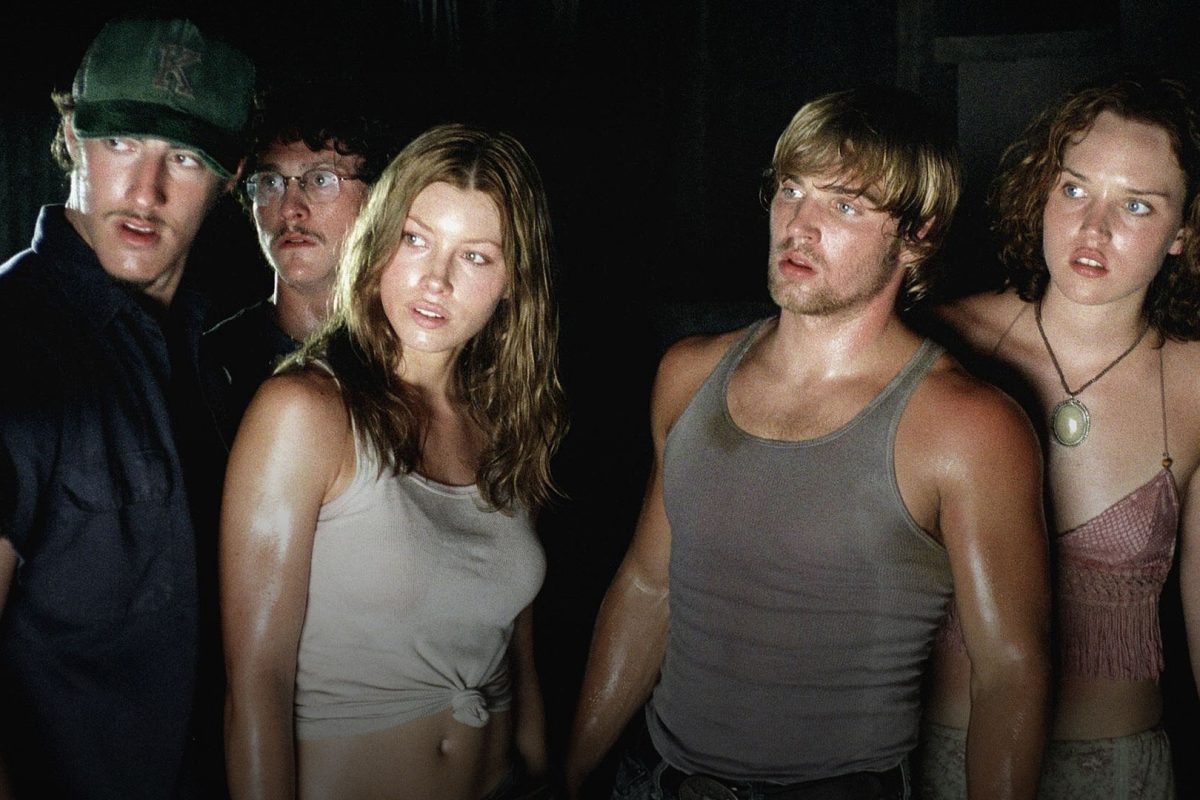
Enter Our Halloween Giveaway!
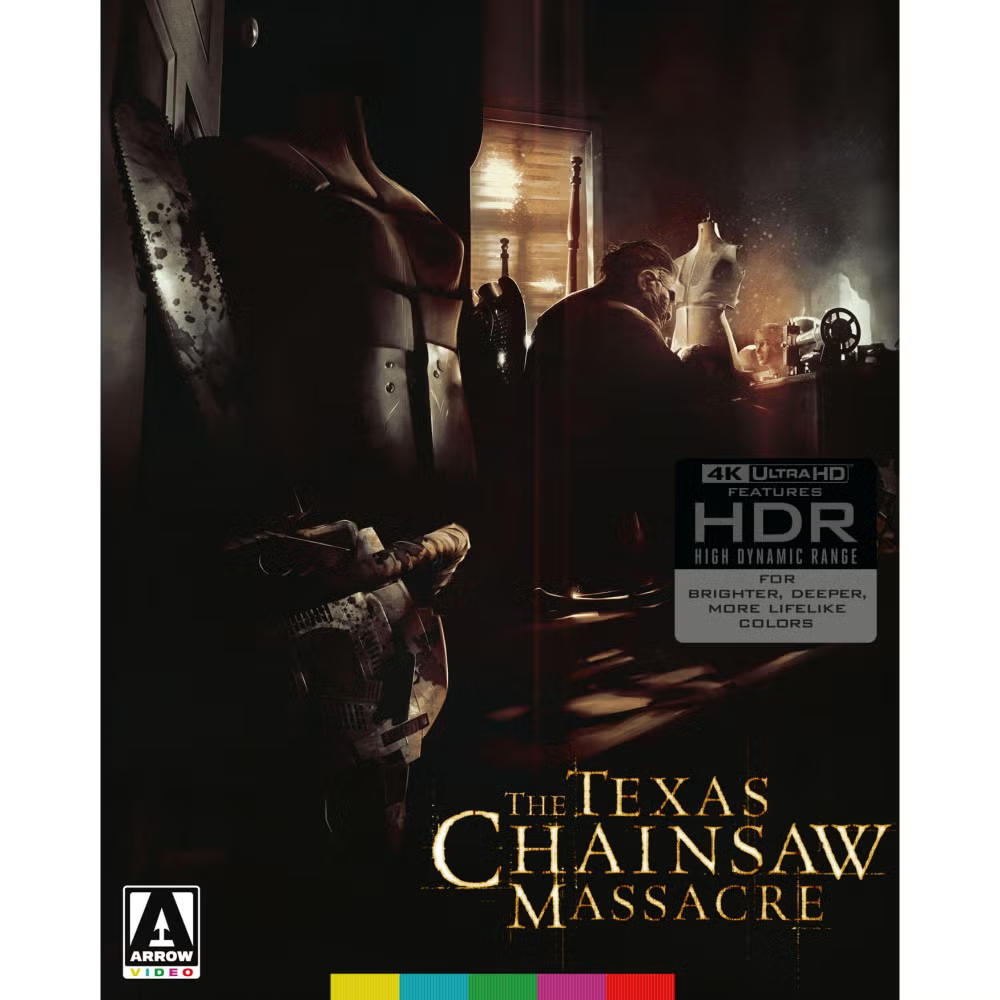
How to Enter:
Step 1. Make sure to FOLLOW US ON FACEBOOK AND JOIN OUR FACEBOOK GROUP!
Step 2. LIKE AND SHARE the giveaway post!
Step 3. This is the most important step, email us at contact@horrorpress.com with your FULL Facebook name (so we can verify you’re in the group) and who your favorite character is from the Texas Chainsaw franchise.
**Giveaway entries are limited to addresses in the United States.**
**All entries must be 18 or older to enter**
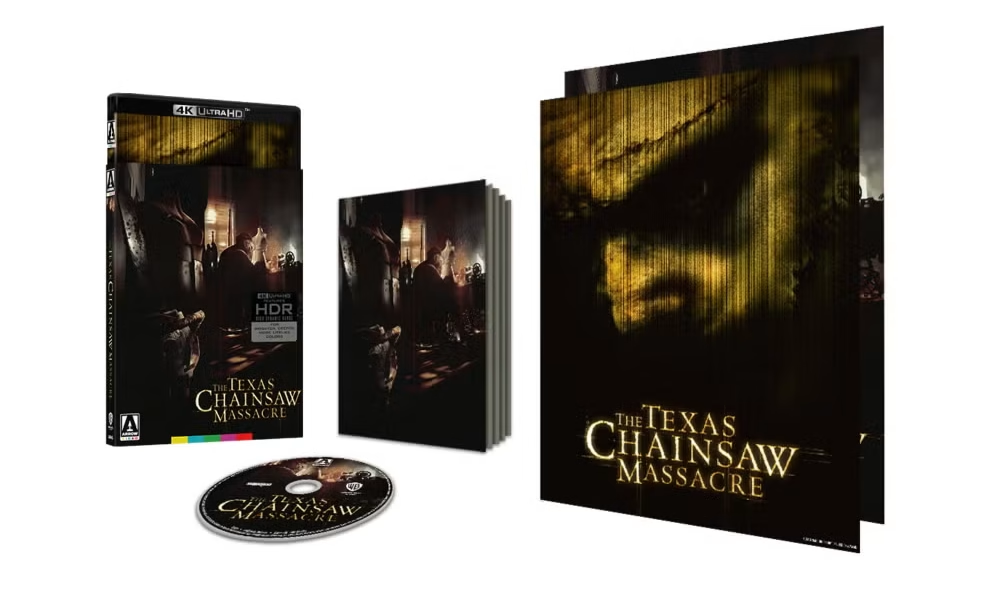
What You’ll Win
The Texas Chainsaw Massacre (2003) Limited Edition 4K UHD from Arrow Video
- 4K (2160p) Ultra HD Blu-ray presentation in Dolby Vision (HDR10 compatible)
- Original DTS-HD MA 7.1 and 5.1 surround audio and lossless stereo audio
- Optional English subtitles for the deaf and hard of hearing
- Brand new audio commentary with Dread Central co-founder Steve “Uncle Creepy” Barton and co-host of The Spooky Picture Show podcast Chris MacGibbon
- Archival audio commentary with director Marcus Nispel, producer Michael Bay, executive producers Brad Fuller and Andrew Form and New Line Cinema founder Robert Shaye
- Archival audio commentary with Marcus Nispel, director of photography Daniel Pearl, production designer Greg Blair, art director Scott Gallager, sound supervisor Trevor Jolly and composer Steve Jablonsky
- Archival audio commentary with Marcus Nispel, Michael Bay, writer Scott Kosar, Brad Fuller, Andrew Form and actors Jessica Biel, Erica Leerhsen, Eric Balfour Jonathan Tucker, Mike Vogel and Andrew Bryniarski
- Reimagining a Classic, a brand new interview with director Marcus Nispel
- Shadows of Yesteryear, a brand new interview with cinematographer Daniel Pearl
- The Lost Leatherface, a brand new interview with actor Brett Wagner
- Masks and Massacres, a brand new interview with makeup effects artist Scott Stoddard
- Chainsaw Symphony, a brand new interview with composer Steve Jablonsky
- Chainsaw Redux: Making A Massacre, a making-of documentary
- Ed Gein: The Ghoul of Plainfield, an in-depth look at the infamous killer who inspired the character of Leatherface
- Severed Parts, a look at the cutting room floor and some of the scenes excised from the final edit
- Deleted scenes including an alternate opening and ending
- Screen tests for Jessica Biel, Eric Balfour and Erica Leerhsen
- Behind-the-scenes featurette
- Cast and crew interviews
- Theatrical trailers and TV spots
- Concept art galleries
- Reversible sleeve featuring original and newly commissioned artwork by Aaron Lea
- Double-sided foldout poster featuring original and newly commissioned artwork by Aaron Lea
- Illustrated collector’s booklet featuring new writing on the film by Michael Gingold
Misc
NYCC 2025 Horror Highlights: A Sneak Peek at ‘The Lost Boys’ Musical, ‘Resident Evil: Requiem,’ and More!
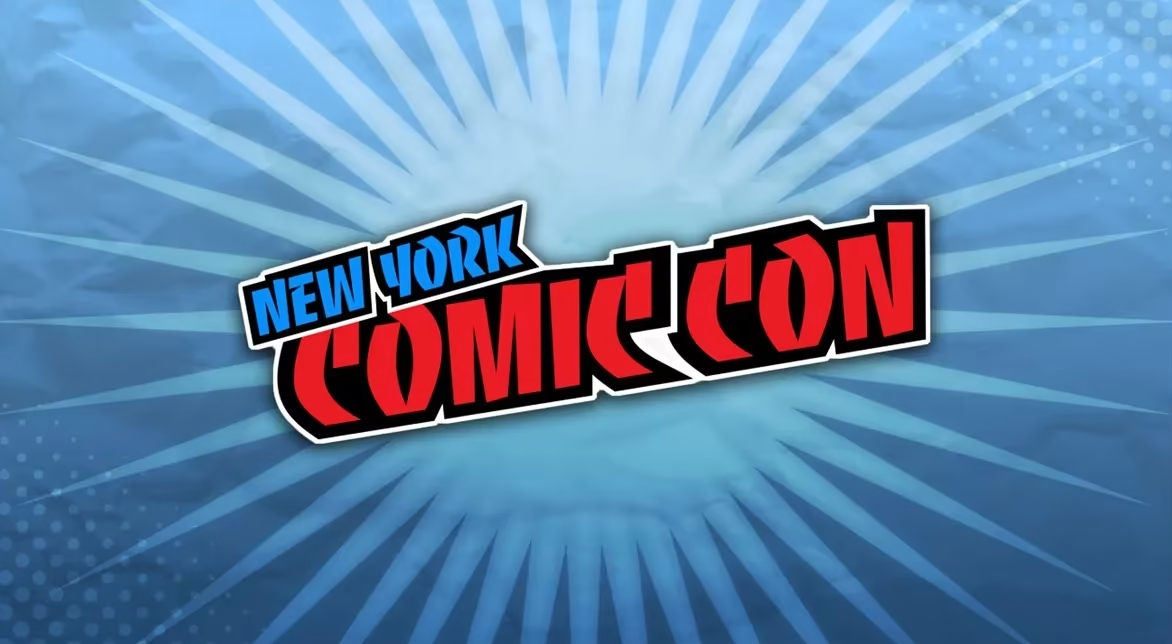
As soon as New York Comic Con announced that its 2025 theme would be “haunted,” I started lacing up my comfy shoes and making a beeline for the Javitz Center! Horror has always been represented at the con, but it felt fitting that it should play a central role in this year’s event at a time when the genre seems more popular than ever.
From beloved family-friendly properties like The Nightmare Before Christmas to pants-dampening titles like the upcoming Resident Evil: Requiem, horror appeared in countless shapes and forms. Here are all the best and scariest insights I gleaned from the show floor, panel rooms, and pop-ups of New York Comic Con 2025!
Our NYCC 2025 Horror Highlights
Resident Evil: Requiem Is Going to Test Your Bladder Strength
Full disclaimer: I’m not a gamer. I’m honestly pretty bad at games, which made my Resident Evil: Requiem play session all the more frightening because I was convinced that everyone around me would realize I’m a fraud. But with easy-to-grasp controls, even for a newb like me, the latest installment in the iconic horror franchise quickly sucked me in and left me on edge for entirely different reasons.
During my 30-minute session, I was introduced to FBI analyst Grace Ashcroft, Requiem’s central character. She swims to consciousness to find herself strapped upside down on a gurney with a needle in her arm, siphoning her blood. After Grace managed to free herself, the controls were handed over to me to explore the creepy facility through Grace’s eyes, looking for a fuse. Some spaces were bathed in red light; others were lit only by flickering bulbs that left me white-knuckling the controller, waiting for something to emerge from the shadows and swallow me whole, not helped by Grace’s anxious, stuttering breathing in my ear.
I took a moment to appreciate how detailed video games have become since my childhood experiences playing Evil Dead: Hail to the King on the original PlayStation (seriously, you can see the dust drifting in beams of light now?!), only for the sound of movement somewhere in the facility to yank me back to the present. I renewed my frantic search for the fuse, only to run blindly into a pitch-black room and encounter something enormous that dragged me into the darkness. Sorry, Grace!
You can find out what happens next when Resident Evil: Requiem releases for the PlayStation 5, Xbox Series X|S, PC, and Nintendo Switch 2 on February 27, 2026.
Megan Fox Is Among the New Cast Members in Five Nights at Freddy’s 2—And Blumhouse Hasn’t Given Up on Its Other m3gan Yet
Blumhouse made several announcements at their NYCC panel, most notably that Megan Fox (Jennifer’s Body) is voicing Toy Chica in director Emma Tammi’s highly anticipated sequel Five Nights at Freddy’s 2, coming to theaters on December 5. Other new additions to the cast include YouTuber Matthew Patrick, aka MatPat, who cameoed in the first movie and will voice Toy Bonnie, and Kellen Goff, who has voiced multiple characters in the game series and will now lend his pipes to Toy Freddy.
I’m interested in Five Nights at Freddy’s 2, not least because my best friend is terrified of the franchise and makes a wildly entertaining moviegoing companion—but I’m more interested in the future of another Blumhouse franchise, M3GAN. After the sequel underperformed, likely due in part to its hard genre pivot away from horror and into action territory, the future of the killer doll is uncertain. But in a special industry presentation on “The Business of Fear,” Jason Blum revealed that “we’re all working to keep M3GAN alive,” adding that Blumhouse is exploring other potential mediums before trying to resurrect her on film.
Does that mean a M3GAN video game might come our way in the future, or perhaps a TV series? I don’t know, but I have a feeling this isn’t the last we’ve seen of the silicone diva.
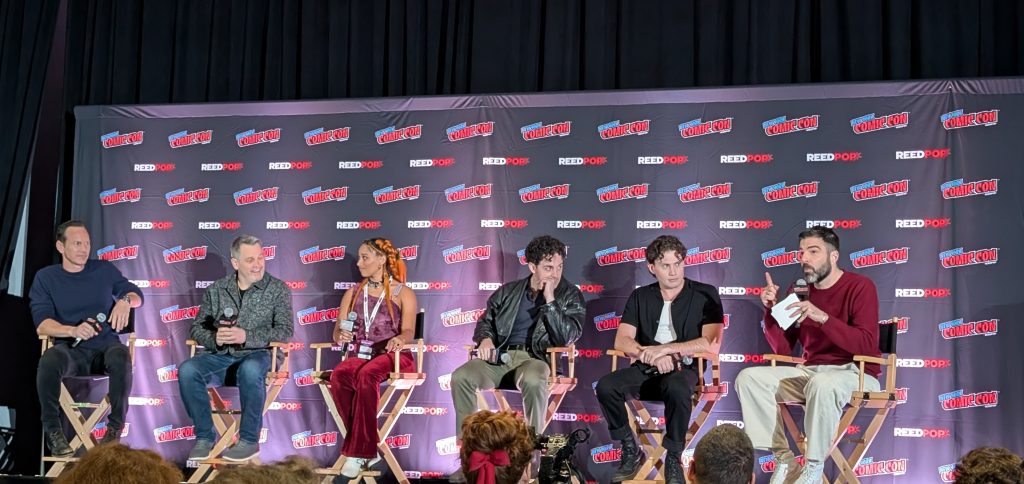
Photo taken by Samantha McLaren.
The Lost Boys: A New Musical Will Feature Flying Stunts and a Live Vampire Band
My queer heart is a sucker for musical adaptations of horror films I love, so you can be certain that I’ll be heading down to the Santa Carla Boulevard—aka Broadway’s Palace Theater—for The Lost Boys: A New Musical, which begins previews on March 27, 2026. At their NYCC panel, producer Patrick Wilson (The Conjuring franchise), director Michael Arden (Maybe Happy Ending), and cast members LJ Benet, Ali Louis Bourzgui, and Maria Wirries revealed why they feel Joel Schumacher’s 1987 classic translates so well to the stage, and what audiences can look forward to.
“There’s something that I see with both horror movies, musicals, and superhero movies—there’s an element of melodrama that’s really rewarding,” says Wilson, who began his career in musical theater and worked with Schumacher on the director’s 2004 film adaptation of The Phantom of the Opera. “Some people view it as camp, but there’s a reality of it being heightened that felt like this story cemented itself so much to being a musical.”
“They’re a biker gang, after all, and there’s a level of theatricality to that in and of itself,” says Arden. “Our biker gang also happens to play instruments.”
That’s right: the vampires will be playing instruments live on stage, which made casting twice as hard. Ali Louis Bourzgui, who plays David, the character portrayed by Kiefer Sutherland in the film, reveals that he plays guitar. And that wasn’t the only unusual request in the casting call: auditions included a flying test. (Presumably wires were involved, unless Arden has found himself a real cabal of vampires in his cast.)
Other highlights that fans can look forward to include killer music from one of Arden’s favorite bands, The Rescues. You can listen to the song “Have to Have You” right now, featuring instrumentals from Slash. The director also teases that many fan-favorite moments from the film will feature in some way in the musical, including the bridge scene and, yes, even the sexy saxophone guy.
Greg Nicotero’s Guts & Glory Marks a New Challenge for a Legend of the Business
If you like looking at gnarly practical effects in horror movies, chances are you’re familiar with Greg Nicotero’s work, whether you realize it or not. The legendary SFX artist has worked on everything from George Romero’s Day of the Dead and Sam Raimi’s Evil Dead II to Kill Bill and, more recently, The Walking Dead. The impressive extent of his resume was made clear at the panel “Shudder is Here to Scare the S*** Out of You,” in which almost any film mentioned by the other panelists was met by a small smile and a humble murmur of “worked on that” into the mic, often followed by a wild anecdote. Nicotero seems like the most interesting man in the world to grab a drink with, and his new horror competition show for Shudder—Guts & Glory—will let us see more of the man behind the makeup brush.
“Guts & Glory is one of the most fun times I’ve had on a show,” Nicotero says, teasing that the series is “part Sam Raimi, part Halloween Horror Nights, and part Survivor.”
In the six-episode first season, contestants are dropped into an Alabama swamp, where there’s an urban legend about an evil spirit. “One of the contestants gets possessed by the evil spirit, people start dying off, but in the meantime, they’re still competing and there’s a prize,” Nicotero explains.
Guts & Glory is effects-heavy, which was challenging to do in an unscripted series relying on real people’s real-time reactions. “You do a movie, you can cut and try it again,” Nicotero explains. “[This] was completely out of my wheelhouse and out of my comfort zone, but I’m really, really proud of it.”
Nicotero’s Creepshow was one of the first original shows to debut on Shudder, so he’s truly part of the DNA of the horror streamer, which celebrated its 10th anniversary this year. Guts & Glory premieres on October 14 as part of Shudder’s Season of Screams programming.
Horror Short The Littles Deserves the Big-Screen Feature Treatment
Some short films are perfectly suited to their bite-sized format, while others contain the seeds of something much bigger. At the New York Premiere of The Littles, a new short written and directed by American Horror Story producer Andrew Duplessie, I could immediately see the potential for the feature film that Duplessie hopes to make.
Equal parts charming and unsettling, The Littles stars M3GAN’s Violet McGraw as a little girl with a loose floorboard in her bedroom. One night, a scuffling sound and a crack of light between the boards lead the little girl to discover that her family isn’t alone in the house…
Duplessie says The Littles was inspired by his own experiences growing up in a creaky old house with a no-doubt overactive imagination. The short features creepy-cute stop-motion animation from Anthony Scott (The Nightmare Before Christmas), puppets by Katy Strutz (Guillermo del Toro’s Pinocchio), and some truly adorable miniature sets by Aiden Creates, all blended perfectly with the live-action scenes. Check it out if it’s playing at a festival near you, and watch this space for a (fingers-crossed) future feature!
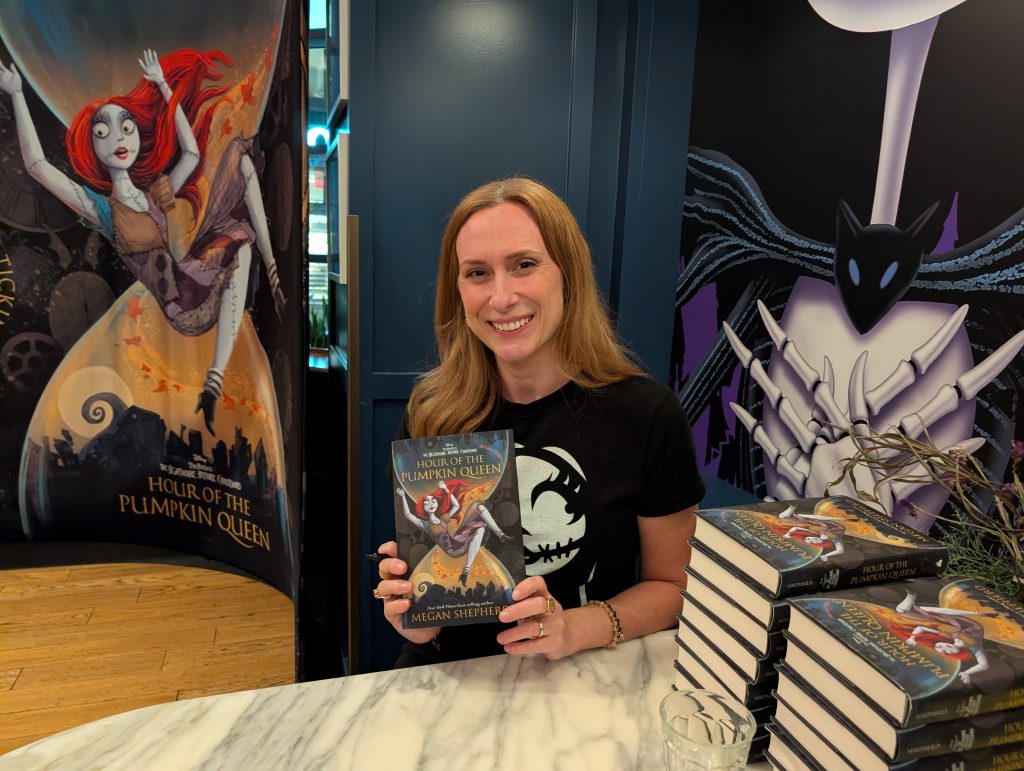
Photo taken by Samantha McLaren.
Disney Publishing’s New The Nightmare Before Christmas Tie-in Novel Welcomes Younger Fans into the Scary Fun
NYCC’s horror happenings weren’t all geared toward an adult audience. Disney Publishing took over Daily Provisions Manhattan West for a pop-up experience inspired by The Nightmare Before Christmas, featuring themed food and drinks like a delectable Pumpkin Potion coffee that I could honestly drink all season long.
At a media and creator event in the space, I took a look at the newly released Hour of the Pumpkin Queen from New York Times best-selling author Megan Shepherd, who also wrote the official novelization of The Nightmare Before Christmas for the film’s 30th anniversary in 2023. In this new tie-in novel, Sally and her rag doll apprentice, Luna, embark on a time-bending adventure to save Jack Skellington and Halloween Town after falling through a mysterious portal.
I was gifted a copy of the book by Disney, but all opinions are my own here. I’m looking forward to giving it a read during the inevitable Halloween hangover that takes place in November, before likely passing it on to my young nieces when they’re old enough. It’s a full novel, not a picture book, so definitely geared more toward a YA audience, but between the beautiful artwork on the cover and the seasonal theme, it might just be the perfect gift for the budding horror lover in your life.
That’s a wrap on New York Comic Con 2025! Be sure to bookmark Horror Press if you haven’t already so you never miss our coverage of conventions, festivals, and more.

























